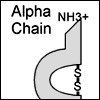Session Overview

|
This session will outline the cellular mechanisms for harvesting energy from glucose and related sugars. It will briefly outline glycolysis as a mechanism to generate ATP and discuss the fate of the pyruvate produced in glycolysis under anaerobic and aerobic conditions. Learning Objectives
|
Session Activities
Lecture Video
Watch the lecture video excerpt
Check Yourself
Question 1
In the process of glycolysis, one glucose molecule is oxidized to form 2 pyruvates and which of the following?
Question 2
In a yeast cell under anaerobic conditions, the NADH (from glycolysis) donates electrons to __________, which produces _________ additional ATP?
In a yeast cell under anaerobic conditions, NADH donates electrons to pyruvate. Although this reaction does not produce any additional ATP, it regenerates the NAD+ needed for subsequent rounds of glycolysis.
Question 3
In a yeast cell under aerobic conditions, pyruvate is oxidized to Acetyl CoA which enters the _________. NADH donates electrons to __________. The total ATP/glucose produced from these processes and glycolysis is __________.








